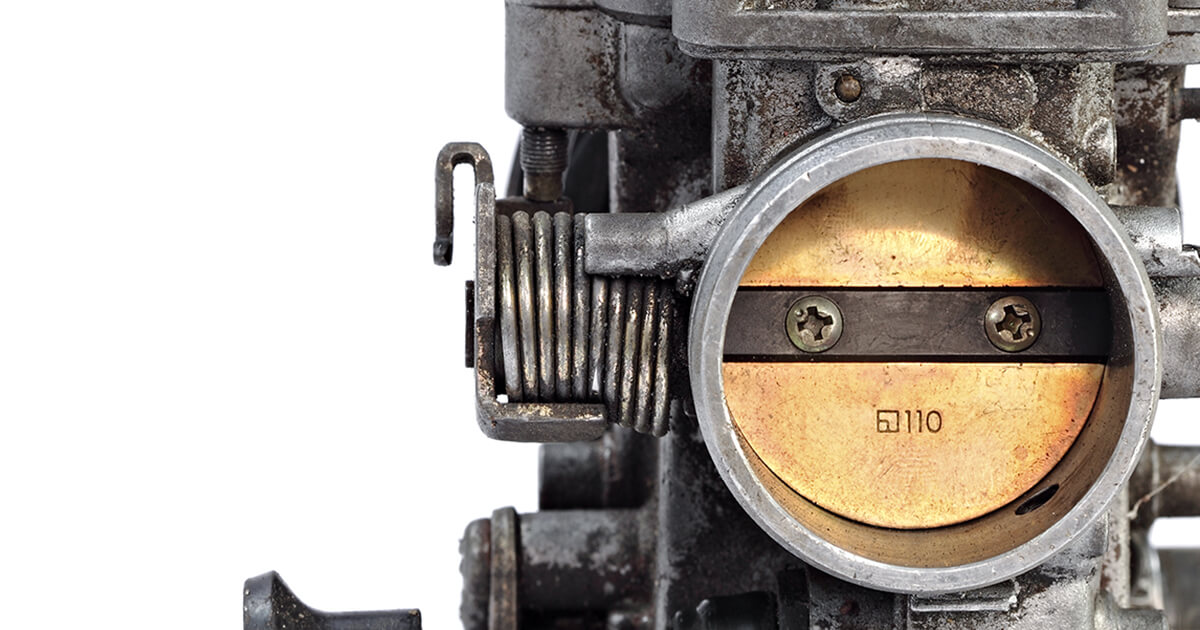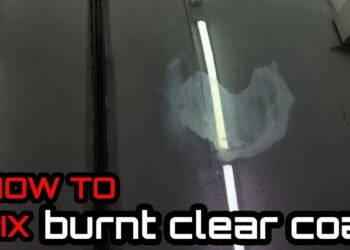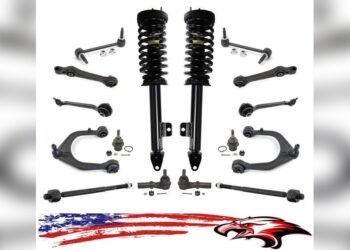Keeping your throttle body clean is crucial for your vehicle’s performance. A dirty throttle body can affect engine efficiency and fuel consumption.
In this guide, we’ll explain how to clean your throttle body step-by-step. Regular maintenance ensures smooth driving and can save you costly repairs. You don’t need to be a mechanic to do this. With a few tools and some patience, you can handle it yourself.
Cleaning the throttle body removes grime and carbon deposits that accumulate over time. These deposits can cause poor engine idling, stalling, or even reduced power. By following our simple instructions, you’ll keep your car running smoothly and efficiently. Let’s get started on improving your car’s performance today.
Tools And Materials
Cleaning your throttle body is essential for maintaining your car’s performance. To do this job right, you need specific tools and materials. This section covers the essential tools and recommended cleaning products required for the task.
Essential Tools
Having the right tools makes the job easier and more effective. Here’s a list of the essential tools:
- Screwdrivers: Both flathead and Phillips screwdrivers are needed.
- Wrenches: A set of wrenches in various sizes.
- Socket Set: A complete socket set with a ratchet.
- Safety Glasses: Protect your eyes from debris and chemicals.
- Gloves: Nitrile or latex gloves to protect your hands.
- Rags: Clean rags or shop towels for wiping parts.
Recommended Cleaning Products
Using the right cleaning products ensures your throttle body is cleaned thoroughly without damage. Here are some recommended products:
- Throttle Body Cleaner: A cleaner specifically designed for throttle bodies.
- Intake Cleaner: Helps remove carbon deposits inside the intake manifold.
- Lubricant Spray: Use a lubricant spray to ensure smooth operation of moving parts.
With these tools and products, you are ready to clean your throttle body. Proper tools and materials make a significant difference in the effectiveness of your work.

Credit: www.mobil.com
Preparation Steps
Cleaning your throttle body is crucial for smooth engine performance. Before diving into the cleaning process, you must prepare properly. Proper preparation ensures safety and efficiency. Follow these steps to get ready.
Safety Precautions
Always prioritize safety. Wear protective gloves to avoid contact with harmful chemicals. Use safety glasses to shield your eyes from debris. Make sure the engine is cool before starting. Disconnect the negative battery terminal to prevent any electrical accidents. Work in a well-ventilated area to avoid inhaling fumes.
Initial Inspection
Conduct a thorough initial inspection. Locate the throttle body, usually near the intake manifold. Check for any visible signs of wear or damage. Look for cracks, leaks, or loose connections. Identify any build-up of grime or carbon deposits. Note these issues for further attention during cleaning.
Removing The Throttle Body
The throttle body plays a vital role in regulating the airflow to your engine. Over time, it can accumulate dirt and grime, affecting performance. Cleaning the throttle body can enhance your car’s efficiency. Follow this guide to safely remove the throttle body for cleaning.
Disconnecting Battery
First, ensure safety by disconnecting the battery. Locate your car’s battery, usually found under the hood. Use a wrench to loosen the negative terminal clamp. Remove the negative cable and secure it away from the battery. This step prevents electrical shocks and accidental starts.
Detaching Air Intake Hose
Next, locate the air intake hose connected to the throttle body. Use a screwdriver to loosen the clamps holding the hose in place. Carefully detach the hose from the throttle body. Inspect the hose for any damage or cracks. If needed, replace it to maintain optimal airflow.
With the air intake hose removed, you can now access the throttle body. This step is crucial for a thorough cleaning. Make sure to handle all components with care to avoid damage.
Cleaning Process
Keeping your throttle body clean is essential for your vehicle’s performance. A clean throttle body helps maintain smooth idling, better fuel efficiency, and a responsive engine. Follow this simple cleaning process to ensure your throttle body remains in top shape.
Applying Cleaner
First, purchase a throttle body cleaner from your local auto parts store. Ensure the engine is cool before starting. Open the hood and locate the throttle body. Disconnect the air intake duct to expose the throttle body.
Shake the throttle body cleaner can well. Spray the cleaner inside the throttle body. Make sure to cover all surfaces, including the throttle plate. Allow the cleaner to sit for a few minutes to dissolve the grime.
Scrubbing And Wiping
Use a soft-bristled brush or toothbrush to scrub the inside. Focus on areas with heavy carbon buildup. Be gentle to avoid damaging the throttle body.
Wipe away the loosened grime with a clean, lint-free cloth. Repeat the scrubbing and wiping process until all the carbon deposits are removed. Ensure the throttle plate moves freely.
Reconnect the air intake duct and start the engine. Rev the engine a few times to ensure smooth operation.
Regular cleaning of your throttle body can prevent rough idling and improve fuel efficiency. Keep your vehicle in top shape by including this simple maintenance task in your routine.
Reassembling The Throttle Body
After cleaning your throttle body, the next step is reassembly. This ensures your engine performs optimally. Follow these steps carefully to avoid errors.
Reattaching Air Intake Hose
First, align the air intake hose with the throttle body opening. Make sure the hose fits snugly.
Tighten the hose clamps with a screwdriver. Check for a tight seal. This prevents air leaks.
Here is a quick checklist for reattaching the air intake hose:
- Align hose with throttle body
- Ensure a snug fit
- Tighten hose clamps
- Check for air leaks
Reconnecting Battery
Next, reconnect the battery. Attach the positive terminal first. Secure it with a wrench.
Then, connect the negative terminal. Tighten it securely. This prevents power loss.
Follow these steps to reconnect the battery:
- Attach positive terminal
- Secure with a wrench
- Connect negative terminal
- Tighten securely
Your throttle body is now reassembled. Your vehicle is ready for a test run.
Post-cleaning Inspection
Once you have cleaned your throttle body, it’s vital to ensure everything is in proper working order. Performing a post-cleaning inspection helps verify that the cleaning process was successful and that no issues have arisen. This step ensures your vehicle runs smoothly and efficiently.
Checking For Leaks
Start by checking for leaks around the throttle body. Leaks can cause a range of issues, including poor engine performance and reduced fuel efficiency. Follow these steps to check for leaks:
- Inspect the gaskets and seals around the throttle body for any signs of damage.
- Ensure all bolts and screws are tight and secure.
- Look for any cracks or splits in the hoses connected to the throttle body.
- Use a spray bottle with soapy water to spray around the throttle body. If you see bubbles forming, there is a leak.
Ensuring Proper Function
After confirming there are no leaks, the next step is to ensure the proper function of the throttle body. Follow these steps to complete the inspection:
- Reconnect the battery and start the engine.
- Listen for any unusual sounds or vibrations coming from the engine bay.
- Check the idle speed of the engine. It should be stable and within the manufacturer’s specifications.
- Test the acceleration by gently pressing the gas pedal. The engine should respond smoothly and without hesitation.
- Observe the check engine light. If it remains off, the throttle body is functioning properly.
By following these steps, you can ensure your throttle body is clean and working efficiently. Performing a post-cleaning inspection is a crucial part of maintaining your vehicle’s engine performance and longevity.
Maintenance Tips
Keeping your throttle body clean is essential for a smooth-running engine. Regular maintenance can prevent many issues. Follow these tips to ensure your throttle body stays in top shape.
Regular Cleaning Schedule
Set a routine to check your throttle body. Inspect it every six months. Clean it if you see any buildup. A consistent cleaning schedule prevents dirt and carbon deposits. This helps maintain engine performance.
Use a throttle body cleaner. Spray it inside the throttle body. Wipe it clean with a soft cloth. Avoid using harsh chemicals. They can damage sensitive parts. Stick to products designed for throttle bodies.
Using Quality Fuel
Quality fuel impacts your throttle body’s cleanliness. Cheap fuel often contains impurities. These can cause carbon buildup. Choose high-quality fuel to reduce deposits. This keeps the throttle body cleaner longer.
Regularly using fuel additives can also help. They clean the fuel system. This includes the throttle body. Additives prevent carbon buildup. Use them according to the manufacturer’s instructions. This simple step can make a big difference.

Credit: www.familyhandyman.com

Credit: m.youtube.com
Frequently Asked Questions
What Is A Throttle Body?
A throttle body controls air intake in your car’s engine. It affects performance and fuel efficiency.
Why Clean The Throttle Body?
Cleaning removes dirt and deposits. This helps improve engine performance and reduces fuel consumption.
How Often Should You Clean A Throttle Body?
Every 30,000 miles or yearly. Check your car’s manual for specific recommendations.
What Tools Are Needed To Clean A Throttle Body?
You need a wrench, screwdriver, throttle body cleaner, and a clean cloth. Safety gloves are also recommended.
Can I Clean The Throttle Body Myself?
Yes, it’s a simple process. Follow a step-by-step guide and take safety precautions.
Conclusion
Cleaning your throttle body improves engine performance. It keeps your car running smoothly. Follow the steps carefully for best results. Use the right tools and cleaners. A clean throttle body can prevent many issues. Regular maintenance saves you money on repairs.
Always check for signs of buildup. Don’t ignore unusual engine behavior. Keep a clean throttle body for optimal performance. Your car will thank you. Happy driving!

















